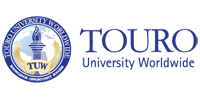
Women with MBAs can increase their options in the working world.
When it comes to higher education, women are passing with flying colors. According to figures compiled by the American Enterprise Institute, women earned the majority of doctoral degrees in 2016 – the eighth consecutive year that this was the case – and outnumber men by an average of 135 to 100 in seven of 11 graduate fields tracked by the Council of Graduate Schools.
But with fewer females serving in executive capacities within the financial sector, business schools are redoubling their recruitment efforts so more women have opportunities to become corporate successes.
Various studies in recent years have demonstrated the lack of female representation in financial circles. In 2017, for example, roughly 10 percent of mutual funds based in the U.S. were led by women, the Financial Times reported using Morningstar data. That’s down from 11 percent in 2008. The same is true among the world’s two dozen largest banks, as women sit at the helm of slightly less than 25 percent of them, the Financial Times reported in 2017.
This isn’t to suggest women haven’t made substantial inroads in leadership positions. To the contrary, according to Bloomberg, women and ethnic minorities accounted for a majority of the people picked to fill vacated board seats among Standard & Poor’s 500 companies. More specifically, 36 percent of the seats last year went to women.
What universities are doing to appeal to women
Still, business schools have detected areas of weakness in terms of gender parity and are looking to stem the tide before it becomes too much of a trend, both in the U.S. and abroad. For instance, throughout the calendar year, Harvard Business School hosts informal lunches designed to appeal to women so they can learn more about what makes Harvard unique and an ideal institution to earn an MBA. Additionally, the Women’s Student Association is the Ivy League’s single largest student club and enables women to maximize their potential in various development spheres, both inside and outside the classroom. The WSA is perhaps best known for its Annual Dynamic Women in Business Conference, now in its 27th year.
Business school enrollment rose in 2015
Women enrolling in business school has waxed and waned over the years. For example, a Forte Foundation study found that in 2015, more than 36 percent of women were full-time students at the nation’s top business schools, The Huffington Post reported. That’s up from 32 percent in 2011. Of the 36 institutions examined, twelve had a rate of 40 percent or more.
Perhaps inspired by women’s growth, 2015 was the same year that the University of Maryland – specifically the Robert H. Smith School of Business – set a goal for reaching an enrollment rate of 50 percent by 2020, the Financial Times reported. It seems to be headed in the right direction, as 39.5 percent of its MBA students are women, up from 36 percent in 2015.
With greater representation in the business sector, the economy stands to benefit, perhaps more so than it has already. Since the mid-1990s, revenues for women-owned firms have jumped 103 percent, according to figures compiled by American Express OPEN.
With business schools – and businesses, in general – more gender diverse, opportunities abound for consumers, universities, companies and the very economy itself.

10601 Calle Lee, Los Alamitos, CA, 90720
Touro University Worldwide is a nonprofit institution of higher learning established by philanthropi....

401 N Fairview St, Lock Haven, PA, 17745
Founded in 1870, Lock Haven University sits on the West Branch of the Susquehanna River and looks ov....

5701 Delhi Road, Cincinnati, OH, 45233
Mount St. Joseph University is a Catholic academic community grounded in the spiritual values and vi....

Doheny Campus, Los Angeles, CA, 90007
The Master of Art in Humanities at Mount Saint Mary’s University is a dynamic and fl....

1000 Regent University Drive, Virginia Beach, VA, 23464
Regent University is a Christian learning community comprised of seven graduate schools (Business &a....

126 Hofstra University, Hempstead, NY, 11549
At Hofstra University, students take advantage of dynamic courses, flexible schedules, exceptional f....

3690 East Avenue, Rochester, NY, 14618
As an independent institution in the Catholic tradition of American higher education, St. John Fishe....

Graduate Admissions Office, Springfield, MA, 01119
Western New England University offers a diverse range of master's, doctoral, and dual degree pr....